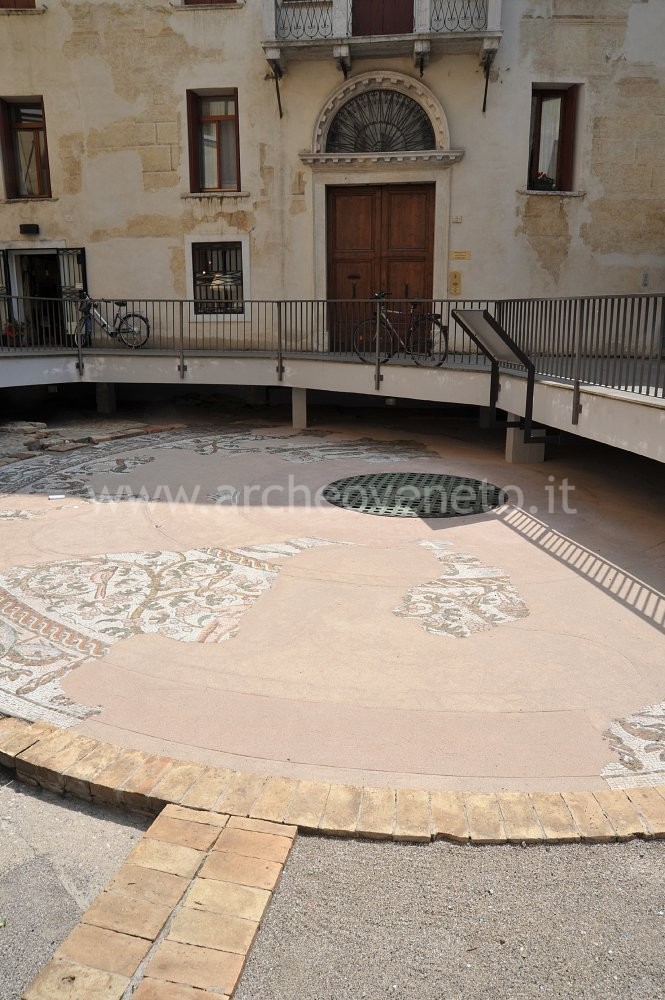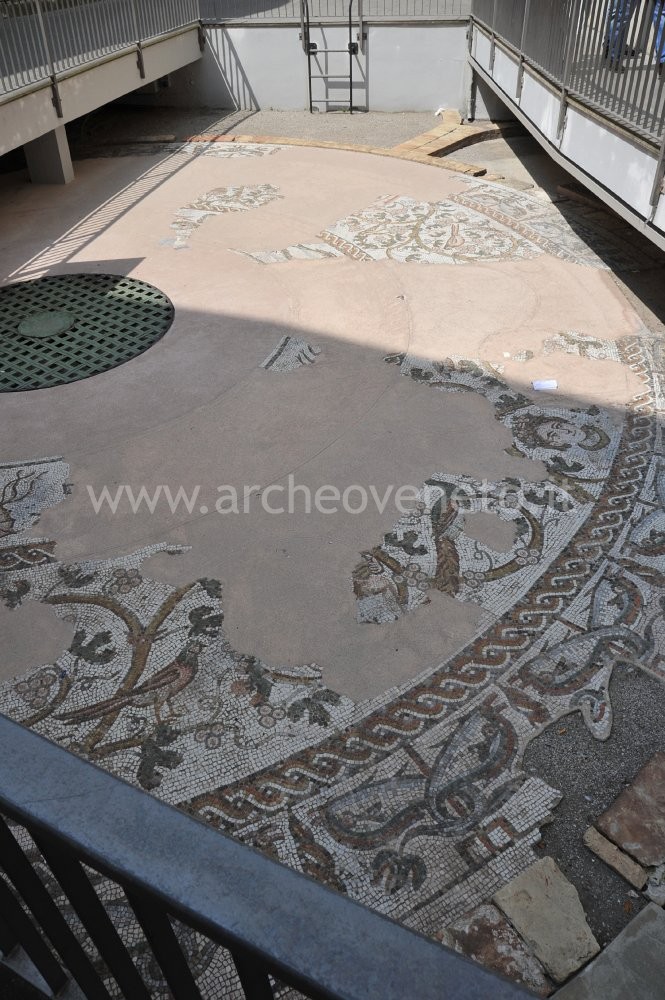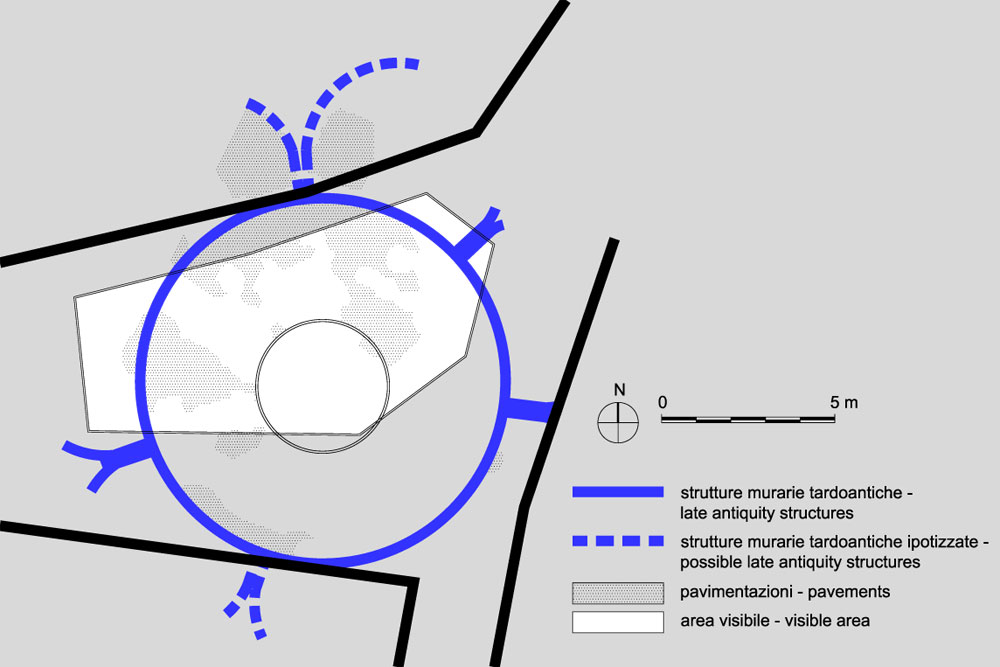|
|
File
Late antiquity mosaic in the street Via Canoniche – Treviso
|
| Via Canoniche 5-9 – 31100 Treviso (TV)
|
  |
|
Summary

The archaeological area that is conserved under the walkway in the street “Via Canoniche” in Treviso displays the remains of an early Christian circular baptistery, and particularly some of its mosaic pavements.
History of research
The excavations were carried out in 1967 by the General Direction for Archaeological Heritage in the Veneto region, during the works for the restoration of the little square in the street “Via Canoniche”.
Urban and geographical context
Treviso is located in the middle of the Veneto plain, in an area rich in water and rivers. Among these, the main one is the Sile river, that springs 15 km west of Treviso and which flows up to Treviso and then south-east up to the Veneto Lagoon. The archaeological area is located in the very core of the modern city centre as well as of the ancient Roman settlement.
Chronology
IV A.D. (first half) |

 Slightly underneath the walkway of the street “Via Canoniche” it is possible to see the remains of a building of Treviso during Late Antiquity. It’s a circular building with a diameter of approximately 10 metres, entirely surrounded by seven semicircular niches each 4 metres deep and 4,5 metres large. At the centre of this room it is possible to see the remains of a tub made with marble slabs. The remains of this building are not complete and for this reason it is not possible to draw an hypothesis on where the entrance was and what it would look like. Slightly underneath the walkway of the street “Via Canoniche” it is possible to see the remains of a building of Treviso during Late Antiquity. It’s a circular building with a diameter of approximately 10 metres, entirely surrounded by seven semicircular niches each 4 metres deep and 4,5 metres large. At the centre of this room it is possible to see the remains of a tub made with marble slabs. The remains of this building are not complete and for this reason it is not possible to draw an hypothesis on where the entrance was and what it would look like.
Both the main room and the niches were paved in mosaic, which represent the most consistent remain at the site. The mosaic of the main room is divided into three concentric bands: external, medium and inner. The most external band displays couples of dolphins holding by tail to a trident and alternated to a sort of twisted shell. The medium band, which is also the biggest one, there are grape-vine shoots with birds and cherubs all collecting wine. There is also the head of a woman, which most certainly represents a season – probably autumn. Finally, the inner band is decorated with fish and shells.
The structure of the building and its decoration suggest that the building might be dated to the first half of the IV century and that it might have been the ancient baptistery of Treviso. Other researchers draw the hypothesis that the building might have belonged to an aristocratic living compound which was later turned into a baptistery.
|

Visitability: Esterno
Ticket: No
 School access School access
Recommended tour time (minutes): 20
 Information boards Information boards
| Bertacchi L. 1980, Architettura e mosaici, in Da Aquileia a Venezia: una mediazione tra l’Europa e l’Oriente dal II secolo a. C. al VI secolo d. C., Milano, pp. 332-333. |
| Malizia A. 1987, Treviso, in Il Veneto nell’età romana, II, a cura di Cavalieri Manasse G., Verona, pp. 352. |
| Bonetto J. 2009, Veneto (Archeologia delle Regioni d’Italia), Roma, pp. 483-484. |
|

